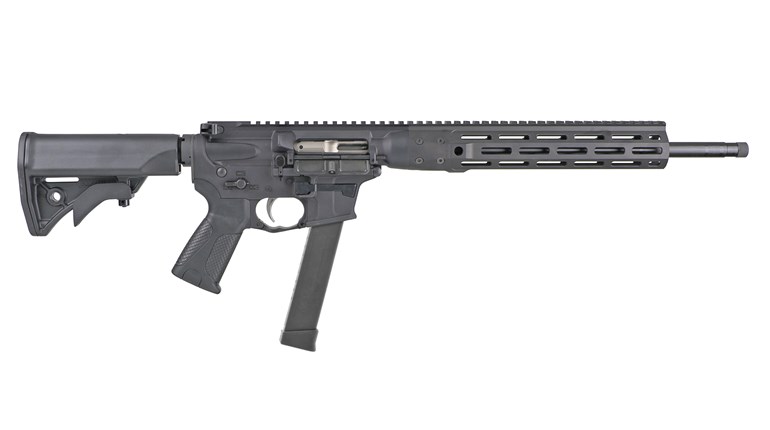
We’re back to Q&A about Home Carry considerations this week, though mainly because the timing of a question was nothing short of prescient. Our last installment dealt with technologies that may indeed help you shoot and/or aim better, but stressed that they were no substitute for—and occasionally a disastrous distraction from—proper target identification. So what does help, if day or room light is unavailable (or undesirable—a whole topic in itself)?
Surprising <<cue the adding machine sound effect>> nobody, a flashlight of some sort is essential, but also where disagreements start, and where we turn to an apropos question from a reader: Which is better—a handheld or firearm-mounted light?
Mounted Lights
Advantages accrue to mounting a light on your handgun or other defensive firearm. The most obvious is how it co-witnesses with the bore and sights, and allows for a solid, two-handed grip on the firearm in case a shot or shots become necessary. It also keeps a hand free, or at least potentially free, while the light is still in use and shooting possible (if you’ve done your strong- or weak-hand only practice, that is). This off-the-gun hand can be valuable in several ways.

If you have to contend with almost any other device—like a doorknob, key or phone (to say nothing of a reload)—having your firearm and co-witness light available is difficult to beat. But if there is a pet to restrain, or a family member to guide or aid, “benefit” may not adequately cover the case. Note that on a long arm (shotgun or carbine), mounting is almost essential. Adequate maneuver of those defensive tools is all but impossible if the light isn’t attached to the firearm in some fashion, or else the rapid, effective use of the firearm is seriously compromised. We aren’t saying a technique for long arms plus flashlights doesn’t exist, but it’s eluded us very effectively.
The disadvantage here is also quite plain: Everything you point your light at is also covered by the muzzle of a (presumably loaded and off-safe) gun. That’s a major no-no when the source of that “bump in the night” turns out to be a miscreant who is also a much-loved relation.
Handheld Flashlights
The arguably biggest benefit of a flashlight not attached to your defensive wherewithal is essentially reciprocal to the mounted device: Not everything you illuminate must be “muzzled” by your firearm. Tactics aside (again, another column, or perhaps series), this is more versatile in many respects, though with one comparatively huge downside: It makes actual shooting more difficult.

There’s no mystery as to why. Since the flashlight is retained in the weak hand, weapon support, aiming and firing become strong-hand only affairs—generally less accurate, slower and more malfunction-prone. Also, the whole “free hand” notion for doorknobs, dialing, shepherding, reloading, etc. goes right out the window.
Light plus gun techniques also represent a major departure from standard hand positions, though substantive weak- or strong-hand only practice will help considerably in adopting these. The plural there is no accident, by the by, because one will generally not suffice. “Cornering” to both left and right presents a challenge in some methods, while the creation of inviting but ruinous trajectories for incoming fire make others unattractive. Another subset defeat hand strength or dexterity so rapidly that they are essentially useless to some practitioners.
The solution we suggest here is unsophisticated. Try several, and pick the two you think: 1) give the best lighting utility—remember the goal is to identify a potential target absolutely; and 2) compromise precise shot placement the least. Then practice, practice, practice.

Whichever devices and associated techniques you select, two intertwined considerations remain. First is that what works “away” may not be the best choice for home, nor even legal (think brandishing or felony menacing). If you believe family members and other loved ones are all-but-sure never to appear spontaneously, trading such muzzling risks for superior shot control may be a good call.
Second is a tendency to throw—or not to throw—money at a lumens problem amid confusions about technique: In terms of light, more is nearly always better. And if we hold to the moral necessity not to shoot except in the gravest extreme, bathing the unannounced in literally painful brightness is a powerful dissuader of the manifestly unwelcome, and identifier of the merely unexpected.
Get either circumstance right with the light and light technique that you work the best, and Carry on.
Frank Winn has been studying arms and their relationship to tyranny, meaningful liberty and personal security all his adult life. He has been a firearms safety/shooting instructor for more than 20 years, and earned state, regional and national titles in several competitive disciplines.

































